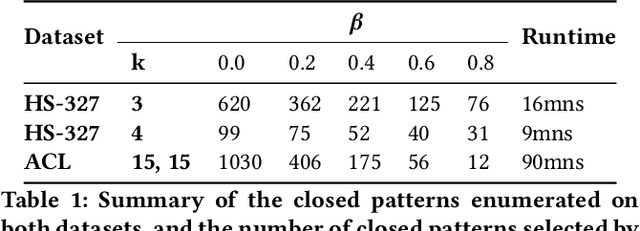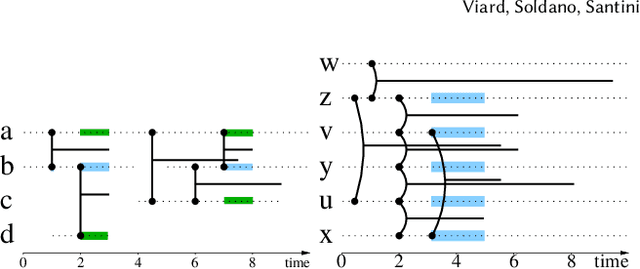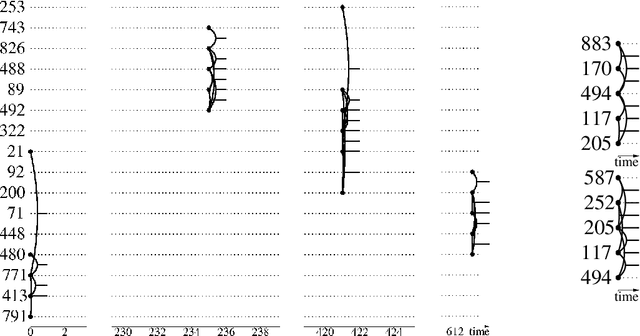Guillaume Santini
Closed pattern mining of interval data and distributional data
Dec 09, 2022Abstract:We discuss pattern languages for closed pattern mining and learning of interval data and distributional data. We first introduce pattern languages relying on pairs of intersection-based constraints or pairs of inclusion based constraints, or both, applied to intervals. We discuss the encoding of such interval patterns as itemsets thus allowing to use closed itemsets mining and formal concept analysis programs. We experiment these languages on clustering and supervised learning tasks. Then we show how to extend the approach to address distributional data.
Exploring and mining attributed sequences of interactions
Jul 28, 2021



Abstract:We are faced with data comprised of entities interacting over time: this can be individuals meeting, customers buying products, machines exchanging packets on the IP network, among others. Capturing the dynamics as well as the structure of these interactions is of crucial importance for analysis. These interactions can almost always be labeled with content: group belonging, reviews of products, abstracts, etc. We model these stream of interactions as stream graphs, a recent framework to model interactions over time. Formal Concept Analysis provides a framework for analyzing concepts evolving within a context. Considering graphs as the context, it has recently been applied to perform closed pattern mining on social graphs. In this paper, we are interested in pattern mining in sequences of interactions. After recalling and extending notions from formal concept analysis on graphs to stream graphs, we introduce algorithms to enumerate closed patterns on a labeled stream graph, and introduce a way to select relevant closed patterns. We run experiments on two real-world datasets of interactions among students and citations between authors, and show both the feasibility and the relevance of our method.
 Add to Chrome
Add to Chrome Add to Firefox
Add to Firefox Add to Edge
Add to Edge